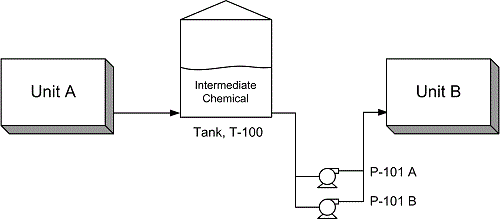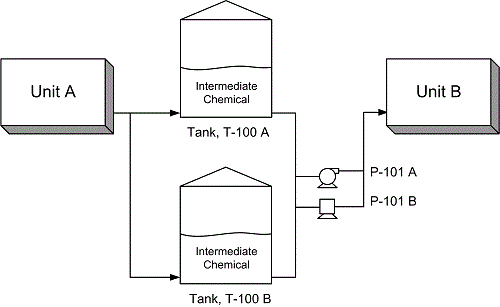The New PSM Normal (2) — Do Less With More
Update: August 2021
The COVID-19 pandemic has changed everything. When more than 22 million people in the United States alone lose their jobs in just a few weeks we have entered a new and different world. There is no going back to an ‘Old Normal’. In the first post in this series, The New PSM Normal (1) — Deflation, I suggest that we are entering a time of deflation, which is defined as a situation where goods and services are available but people do not have the money to purchase them. Even people who do have secure jobs or who have savings hold back on purchases, particularly large purchases such as automobiles; they adopt a “let’s wait and see attitude”. Consequently the companies that provide those goods and services have to cut back, which means that they lay off more people, which means that that there are even fewer customers, which means that — well, you get the idea.
Deflation may lead to lower prices. On the other hand, the financial authorities may decide that the only way they can reduce the massive amounts of debt that they have incurred will be through high inflation.
Last week I said that I hope that this analysis is incorrect. It would be great if we are merely in a V-shaped recession in which we can quickly find a vaccine and/or cure for the disease so that the economy can come roaring back. But I am dubious. The ‘Old Normal’ is in the rear view mirror.
Deflation and the Depression
A defining image of the Depression of the 1930s is the anecdotal story of dairy farmers producing milk that they wanted to sell. There were plenty of hungry people who wished to purchase the milk, but they could not do so because they were unemployed and so they had no money. Hence the farmers wound up pouring the milk down the drain. (I was put in mind of this story when I read about farmers in our time dumping milk because demand from restaurants has collapsed.)
For the process safety community it all creates a very different world. Means of improving safety will change while funds for safety projects, no matter how well justified such projects may be, will be ever more scarce.
In this post I would like to consider another feature of the 'Old Normal' that may be changing, and that is the philosophy of, 'Do More With Less'. There are many aspects to this philosophy and, as time permits, we will discuss them in future posts. Let’s start with the fact that the virus has exposed problems with our global supply chains that may not go away and that will affect the way in which we manage industrial safety.
Just-in-Time Management
One feature of the 'Do More With Less' strategy is Just-in-Time (JIT) management. JIT calls on managers to “squeeze fat” out of the supply chains by reducing intermediate inventories and by delivering products to the customer “just in time” to meet his or her needs. This strategy forces managers at both ends of the supply chain to be ruthlessly efficient — they have to optimize their processes so that they operate without any glitches or hiccups. The fundamental value of JIT is not that it reduces the working capital needed for intermediate storage, that is a side benefit; the real value is that every manager in the chain is forced to make his or her process more efficient.
Note: The following example is to do with an onshore process plant. But the way of thinking that it discusses can be used in a much broader range of industries such as manufacturing.
Consider the following simple example. A chemical company operates two facilities: Units ‘A’ and ‘B’. Unit A manufactures an intermediate chemical used by Unit ‘B’ whose product is sold to the company’s customers. The intermediate chemical is a liquid, so an Intermediate Storage Tank, T-100, is provided between Units A and B. The chemical is pumped from T-100 to Unit B by Pumps P-101 A/B, each of which has 100% capacity — while one is operating the other is on standby. The pumps are identical; this allows the maintenance manager to minimize the spare parts needed, it reduces the number of operating and maintenance procedures that have to be written, one training program can be used for both pumps and management of change issues are minimized.
T-100 has a one-hour capacity, and is normally operated 50% full. This means that, if Unit A has an operating upset then Unit B can continue normal operations for 30 minutes while the upset is taken care of. Similarly, if B has a problem, A can continue normal operations for 30 minutes. It is this “fat” that needs to be “squeezed”.

The JIT philosophy calls for the managers of both facilities to tighten up their operations such that T-100 is no longer needed and can be taken out of service. The removal of T-100 is a forcing function that compels the managers of Units A and B to tighten up their operations. The reduction in operating costs resulting from the removal of the tank and its associated pumps is merely a side benefit.
The company's process safety professionals support this strategy for three reasons.
- If the tank is out of service we have one less item that can go wrong. (“If a tank’s not there, it can’t leak”.)
- The potential for process upsets such as tank overflow or pump seal leakage is removed.
- The absence of the tank and the pumps reduces the work of the operating and maintenance teams, thus reducing the chance of error in other parts of the facilities.
What I have just described is the world of the ‘Old Normal’. But the pandemic has taught us is that our single-source, lean supply chains are vulnerable. If the spare parts used in Units A or B are manufactured at a single location on the other side of the globe then any widespread disruption, such as a disease that shuts down whole sections of the country where those parts are made, can cause serious interruptions to our chemical plant. Maybe the ‘New Normal’ requires a new way of thinking.
In this new environment the managers at A and B need T-100 and the buffer capacity that it provides. Indeed, they request that an additional storage tank, T-101, be provided. But they are still vulnerable to single-source vulnerabilities at the identical pumps, P-101 A/B. So they call for the two pumps to be totally different. Maybe P-101A is an electrically-driven centrifugal pump from Asia, whereas P-101B is a steam-driven reciprocating pump from Europe.
This is what the new operation looks like.

From a process safety point of view the new operation appears at first to be less safe and more vulnerable. There are more equipment items that can leak, and activities such as procedure-writing, training and management of change all become more burdensome.
But the new arrangement does provide one important safety advantage. Shutting down and then restarting continuously operating facilities without proper planning is often hazardous; experience shows that these are often the times of greatest risk. Therefore the process safety professional has to balance the risks associated with events such as tank overflow from a second tank with the risks to do with unreliable operations.
There has always been a trade-off between efficiency and resilience. If someone wishes to make a facility more resilient, he or she can face pushback, often on the lines of, “We’ve run this way for the last 10 years and nothing has gone wrong, aren’t you being over-cautious?” In coming months and years it is likely that this tension will increase.
A further difficulty is that proposals to install additional equipment items will be made in an uncertain and challenging economic environment. If forecasts to do with deflation turn out to be correct, the additional capital and operating costs will be incurred at a time when revenues are reduced and/or unstable. None of this is easy. Nevertheless, the new safety mantra becomes,
Do Less With More
Welcome to the ‘New Normal’.
